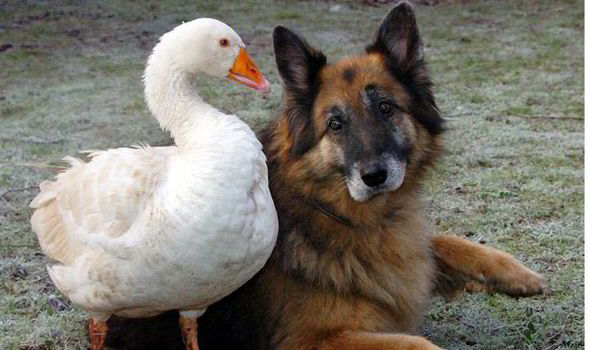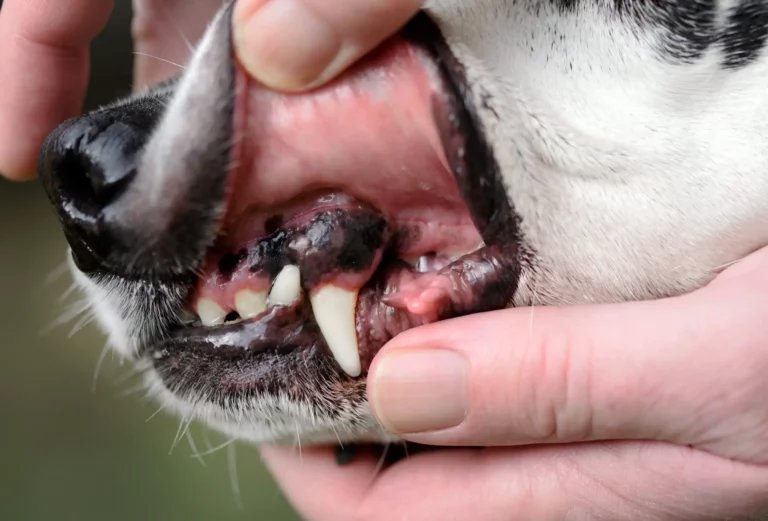Understanding the Effects of Neutering on Testosterone Levels in Dogs
Neutering is a common surgical procedure that countless pet owners choose for their dogs to promote better health and behavior. This decision is not only responsible but can also significantly impact your dog’s life.
One of the most frequently asked questions regarding neutering is about the time it takes for testosterone levels to decrease.
In this article, we’ll dive deep into understanding the neutering process, the role of testosterone in your dog’s life, and finally, reveal how long it takes for testosterone levels to drop after neutering.
Our aim is to provide you with comprehensive insights into this important aspect of pet care, enabling you to make informed decisions for your beloved canine companion.
So, let’s jump right in!
Key takeaways
Neutering a dog leads to a gradual reduction in testosterone levels, typically over a few months.
Behavioral changes linked to reduced testosterone may take time to manifest.
Factors such as age, breed, and size can influence the timeline of testosterone reduction.
Neutering has several health benefits, including a decreased risk of certain diseases.
The procedure also aids in controlling the pet population and can lead to improved behavior.
It’s important to consult a veterinarian for guidance on the timing and aftercare of neutering.
The Neutering Process: What Happens During Surgery
What is neutering and why it’s done
Neutering, also known as castration, is a surgical procedure performed on male dogs to remove their testicles. This process prevents the production of sperm and significantly reduces the levels of testosterone, a hormone responsible for various behaviors and characteristics in male dogs.
Neutering is done for multiple reasons, including health benefits, behavioral improvements, and population control to prevent the overpopulation of pets and unnecessary euthanasia.
The surgical procedure explained
The neutering procedure typically involves the use of general anaesthesia to ensure your dog remains comfortable and pain-free during the surgery. Once your dog is sedated, the veterinarian will make a small incision in front of the scrotum to access and remove the testicles.
After the testicles are removed, the blood vessels and spermatic cords are tied off to prevent bleeding. Finally, the incision is closed with sutures or surgical glue. The entire process usually takes less than an hour.
Recovery and aftercare
Following the surgery, your dog will need proper care and attention to ensure a smooth and successful recovery. Your veterinarian will provide you with specific aftercare instructions, which may include:
- Monitoring your dog for any signs of complications or infection, such as swelling, redness, or discharge from the incision site.
- Ensuring your dog wears an Elizabethan collar (also known as an E-collar or “cone of shame”) to prevent licking or chewing at the incision site.
- Limiting your dog’s physical activity during the recovery period, which typically lasts for 7 to 10 days.
- Administering any prescribed pain medication or antibiotics as directed by your veterinarian.
- Scheduling a follow-up appointment to remove sutures (if applicable) and assess the healing process.
By adhering to these aftercare guidelines, you can help your dog recover comfortably and safely from the neutering procedure.

Understanding Testosterone and Its Role in Your Dog’s Life
What is testosterone
Testosterone is a hormone produced primarily in the testicles of male dogs, though it is also present in lower levels in female dogs. This hormone plays a crucial role in the development of physical characteristics such as muscle growth, bone density, and the development of male reproductive organs.
Additionally, testosterone influences certain behaviors in male dogs, particularly those associated with mating and territoriality.
How it affects your dog’s behavior and health
Testosterone-driven behaviors are natural and part of a dog’s genetic makeup. However, in a domestic setting, these behaviors can become problematic. High testosterone levels can lead to:
- Aggression: Unneutered dogs may exhibit increased aggression toward other dogs or people due to hormonal impulses, making them difficult to manage and potentially dangerous.
- Marking and territoriality: Male dogs with high testosterone levels are more likely to mark their territory by urinating on objects, both inside and outside the home.
- Roaming: Unneutered dogs are more likely to roam away from home in search of a mate, which increases the risk of accidents, getting lost, or encountering aggressive dogs.
Aside from behavioral issues, high testosterone levels can also contribute to certain health problems. Unneutered dogs are at a higher risk of developing testicular cancer and prostate-related issues such as benign prostatic hyperplasia (BPH) and prostatitis.
The impact of neutering on testosterone levels
Neutering effectively reduces testosterone production by removing the primary source of the hormone – the testicles. As a result, neutered dogs usually exhibit a decrease in problematic behaviors and a reduced risk of certain health issues associated with high testosterone levels.
However, it’s important to note that the decline in testosterone is gradual, and the timeline for noticeable changes can vary from one dog to another.
How Long Does It Take for Testosterone Levels to Drop After Neutering?
The gradual decline of testosterone
After your dog has been neutered, testosterone levels do not drop immediately. Instead, there is a gradual decline over time. Within the first few weeks following the procedure, testosterone levels can decrease significantly, but it may take a couple of months for the hormone to be virtually undetectable in the bloodstream.
Factors that may influence the timeline
Several factors can affect the timeline for testosterone reduction in your dog after neutering. These factors include:
- Age: Older dogs may take longer to experience a decline in testosterone levels compared to younger dogs.
- Breed: Some breeds may naturally have higher levels of testosterone, causing a more gradual decline in hormone levels.
- Size: Larger dogs may require more time for testosterone levels to drop due to their larger body mass.
- Individual differences: Each dog is unique, and individual variations in hormone production and metabolism can affect the time it takes for testosterone levels to decrease.C. When to expect noticeable behavioral changes
As testosterone levels decline, you can expect to see positive changes in your dog’s behavior. However, the timing of these changes can vary, with some dogs showing improvement within a few weeks, while others may take a few months.
It’s crucial to be patient and understand that the reduction of testosterone-driven behaviors is a gradual process.
Additionally, it’s essential to remember that neutering may not eliminate all unwanted behaviors entirely, especially if they have become ingrained habits. In these cases, you may need to employ positive reinforcement training and other behavior modification techniques to further support your dog’s progress.
It’s also important to keep in mind that while neutering significantly reduces testosterone levels, it does not completely eliminate the hormone from your dog’s system.
A small amount of testosterone is still produced by the adrenal glands, so it’s normal for your dog to retain some masculine traits and behaviors even after being neutered.
Monitoring your dog’s behavior during the months following the neutering procedure can help you identify any changes in aggression, marking, or other undesirable behaviors. If you’re concerned about your dog’s progress or have questions about their behavior, don’t hesitate to consult your veterinarian for guidance and advice.

The Benefits of Neutering: Beyond Testosterone Reduction
Health benefits for your dog
Neutering offers numerous health benefits for your dog that extend beyond reducing testosterone levels. Some of the key health advantages include:
- Reduced risk of testicular cancer: Neutering completely eliminates the risk of testicular cancer in male dogs, as the testicles are removed during the procedure.
- Lowered risk of prostate issues: Neutered dogs have a significantly reduced risk of developing prostate problems, such as benign prostatic hyperplasia (BPH) and prostatitis.
- Prevention of certain types of hernias and tumors: Neutering can help prevent perianal tumors and perineal hernias, which are more common in unneutered dogs.
Positive behavioral changes
Besides the health benefits, neutering can lead to positive behavioral changes in your dog. With the reduction of testosterone levels, many undesirable behaviors can be minimized or even eliminated. Some of these positive changes include:
- Decreased aggression: Neutered dogs often show less aggression toward other dogs and people, resulting in a more manageable and safer pet.
- Reduced marking and territoriality: Neutering can significantly diminish your dog’s urge to mark its territory, leading to fewer instances of inappropriate urination.
- Less roaming: Neutered dogs are less likely to roam in search of a mate, which can keep them safer and closer to home.C. Contribution to controlling the pet population
One of the most crucial reasons for neutering your dog is to help control the pet population. Millions of dogs end up in shelters each year, and many are euthanized due to a lack of resources and available homes.
Neutering your dog prevents unwanted pregnancies, contributing to the reduction of homeless animals and the strain on shelters and rescue organizations.
Common Myths and Misconceptions About Neutering
Neutering is a widely accepted and recommended practice, but there are still some misconceptions surrounding the procedure. It’s essential to debunk these myths to help dog owners make informed decisions about their pet’s health and well-being.
Neutering will cause weight gain
While some dogs may gain weight after being neutered, the procedure itself is not the primary cause. Reduced testosterone levels can lead to a slightly slower metabolism, but weight gain can be effectively managed through a balanced diet and regular exercise.
Neutering will change my dog’s personality
Neutering may result in reduced aggression, roaming, and marking behaviors, but your dog’s core personality will remain intact. Neutering will not make your dog less affectionate, playful, or alter their fundamental character traits.
It’s better to let a female dog have one litter before spaying
There is no evidence to suggest that allowing a female dog to have a litter before being spayed is beneficial. In fact, spaying a female dog before her first heat cycle significantly reduces the risk of mammary gland cancer and eliminates the risk of uterine and ovarian issues.
Neutering is a risky procedure
Neutering is a routine surgical procedure that is generally considered safe when performed by a skilled veterinarian. As with any surgery, there are risks associated with anesthesia and the procedure itself, but these risks are minimal when compared to the long-term health benefits of neutering. Always consult with your veterinarian to discuss any concerns or questions you may have about the neutering process.
Frequently Asked Questions
Is there any way to speed up the testosterone reduction process after neutering?
The process of testosterone reduction is gradual and natural. There isn’t any method to speed up the process. However, proper aftercare and following your veterinarian’s instructions can ensure a smooth recovery and optimal results.
Can I neuter my dog at any age?
While it’s possible to neuter a dog at various ages, it’s best to consult with your veterinarian to determine the ideal time for your specific pet. Generally, neutering is recommended between six months to one year of age, but this can vary depending on your dog’s breed, size, and overall health.
Will neutering stop my dog from marking its territory?
Neutering can significantly reduce the urge to mark territory in most dogs. However, it may not eliminate the behavior entirely, especially if it has become a deeply ingrained habit.
Are there any alternatives to neutering for reducing testosterone levels?
Chemical castration is an alternative to surgical neutering that can temporarily reduce testosterone levels. However, this method is less common and may not offer the same long-term benefits as surgical neutering. It’s essential to discuss your options with your veterinarian before making any decisions.
Final Thoughts
Testosterone levels in dogs reduce gradually post-neutering, taking a few months to bottom out. Behavior changes may take time, influenced by factors like age, breed, and size.
Neutering has health benefits, reduces risk of certain diseases, and can improve behavior. It also helps control the pet population. Always consult your vet about neutering, as they can guide you on its timing, the procedure, recovery, and aftercare, contributing to your dog’s healthier and happier life.





![What Smell Do Dogs Hate to Pee On? [Top 5 Scents & More]](https://www.warmlypet.com/wp-content/uploads/2023/04/What-Smells-Do-Dogs-Hate-To-Pee-On-768x512.webp)
